I’ve been lucky enough to learn about wine through passionate Portland professionals who all tend to share one belief: at the end of the day, it all comes back to the farming. Great wine starts in the vineyard, with vines that are cared for by human hands, and farming that works with the surrounding ecosystem instead of fighting against it.
Learning from these people has influenced my own taste. When I’m looking for a wine, I’m looking for a personal connection:
Has the winemaker spent time in the vineyard?
Would the vineyard steward let their kids run through and play with the dirt among the vines?
Does the finished wine reflect the place it came from and the people who helped shape it?
For me, those questions tell more about a wine’s quality than any label like “natural” or “low intervention.” Many of the winemakers I respect follow these principles, but their strength is in knowing when to step outside of those lines in order to create something expressive and thoughtful.
And while it’s easy to get a little disconnected from the winemaking process when you live in the city, Oregon wine country is less than an hour away. So I took my own advice and spent some time in the Yamhill-Carlton AVA, visiting wineries that are leading the way in sustainable and ecosystem-focused farming.
Dominio IV
This historic estate was first farmed in 1840, and the current stewards have continued to prioritize biodiversity and ecological balance. Instead of planting the entire property to vine, they’ve kept cherry and hazelnut trees alongside the vineyard blocks to support diversity in the ecosystem.
The vines here are planted on marine sediment, which naturally retains water and reduces the need for irrigation. The tasting barn, originally built in 1917 from Douglas fir, has been updated using locally milled cherry wood, reflecting the thoughtful balance between history and innovation throughout the property.
One Pinot Noir plot is planted in a labyrinth shape, with different clones placed in each ring. That willingness to experiment shows up in the cellar, too. Depending on what they’re aiming to express, they age their wines on oak from France, Hungary, or even Minnesota. Their Imagination Series includes fun and unexpected blends like Viognier, Syrah, and Grenache, or their Tempranillo aged on Minnesota oak.
When I visited, they were working on a self-guided historic walking tour of the property, which should be open soon. I highly recommend taking a walk with a glass of their Sparkling Pinot Noir and picking cherries while you stroll.
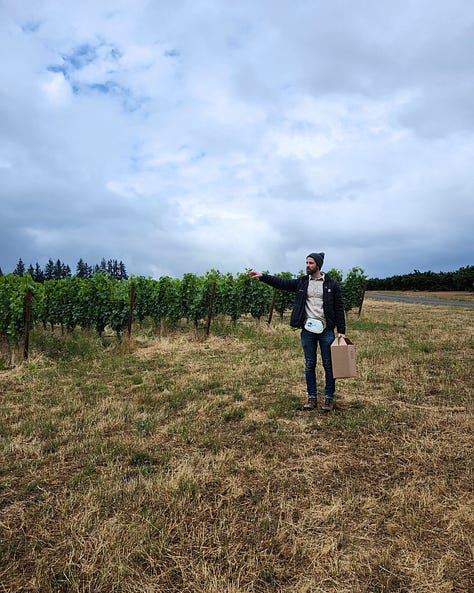
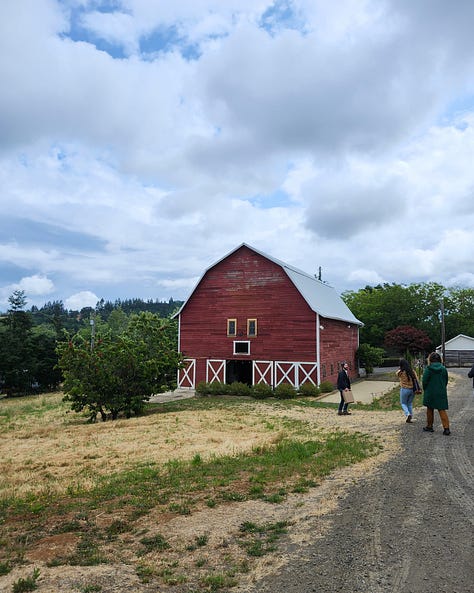
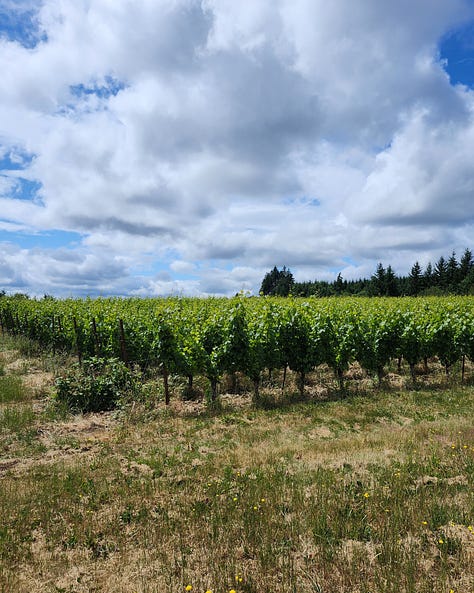
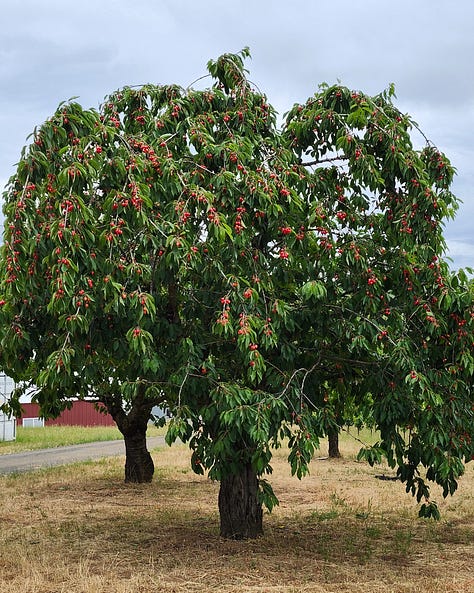

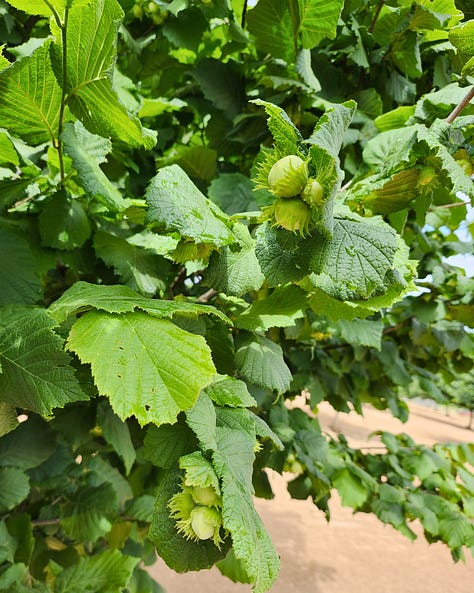
Abbot Claim
Abbot Claim’s motto is Let the vineyard speak, and they are serious about making sure the land has something worth saying. Around the property, they’re replanting native trees, using a worm-powered biofilter to clean their water and waste, and supporting the return of monarch butterflies and bees, not for honey production, but simply for the health of the ecosystem.
Their vineyard practices follow organic, biodynamic, and regenerative principles, but they don’t focus on certifications. They believe this approach produces better wine. Some of these practices include dry-farming, no herbicides and pesticides, growing cover crops, composting, and preparing their own biodynamic treatments.
In the cellar, they aim to preserve the character of the vineyard by keeping the grape solids with the wine for as long as possible. The goal is to produce wines that age well and reflect a clear sense of place.
While I was already in love with Abbot Claim just from the tour of their production space, I literally gasped out loud when our guide opened the doors to their stunning circular cellar. My photos don’t do it justice. The candlelit space feels a bit like being under a mythical castle. Among the barrels, you’ll find cozy seating areas and incredible hospitality. The chardonnay was incredible on its own, but it didn’t hurt to have it paired with tableside caviar service.
If you’re looking to visit a winery where you can nerd out about viticulture and experience luxurious hospitality, this would be my top recommendation.
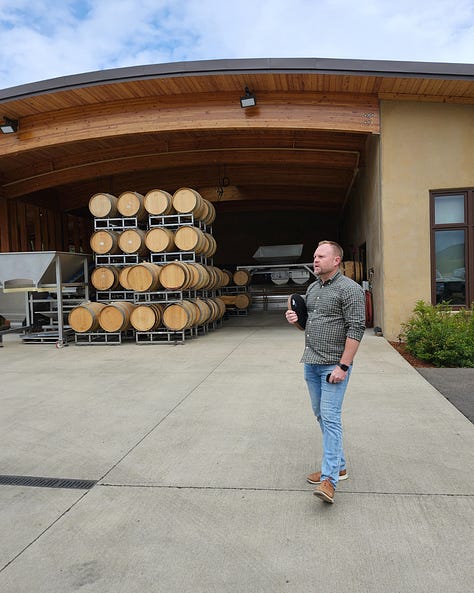
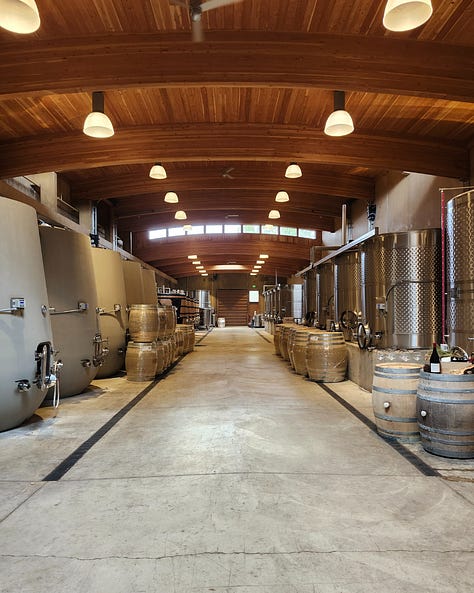
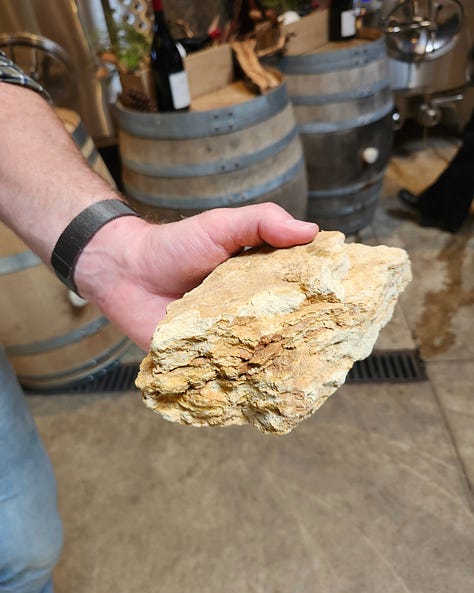
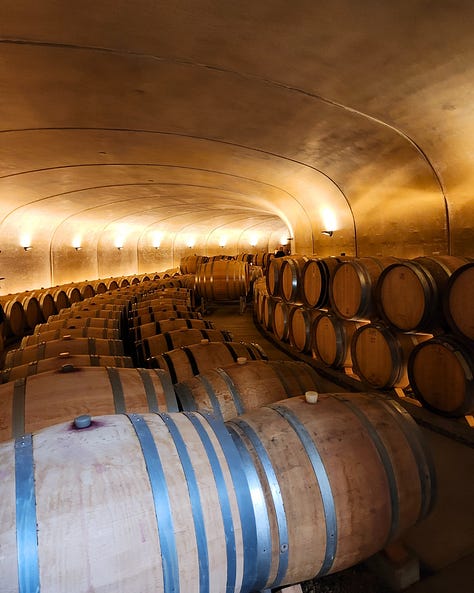
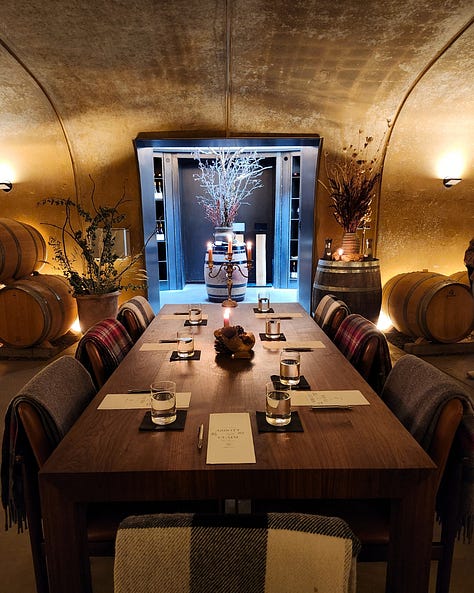
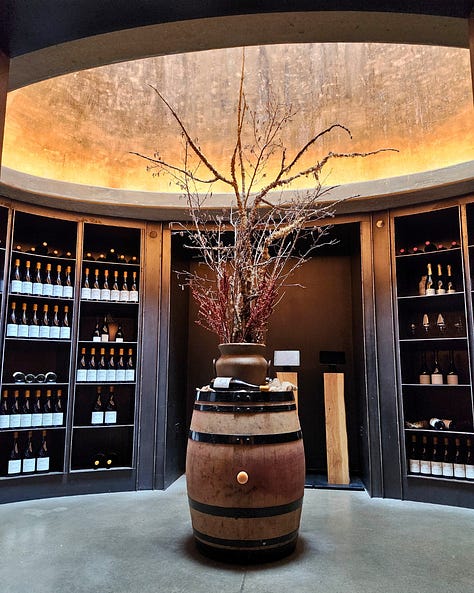
Fairsing Vineyard
The Fairsing tasting room sits on top of a hill with a wide, sweeping view of Oregon’s Coast Range foothills. The name "Fairsing" comes from the Irish word for "bountiful" or "wide vista," and it fits the site perfectly.
Outside the tasting room, there’s a meditative labyrinth and pollinator garden. Just beyond that, the vineyard grows on silt soils and uses composted fertilizer from a nearby organic dairy. They focus on supporting the vineyard’s microbiome through sustainable farming and minimal inputs.
Their thirty-eight acres of Pinot Noir and five acres of Chardonnay are nestled within a one-hundred-acre forest. They’ve reforested seventy of those acres with over 18,000 conifers, 3,000 deciduous trees, and 6,000 native shrubs, investing in the long-term health of the land around the vines. Like the other wineries mentioned, they understand that the health of the whole ecosystem is essential to creating healthy vines.
Their Pinot stands out for its savory character, which they attribute to the stress placed on the vines by the wind and growing conditions. Wine nerds know that optimal vine stress results in more concentrated fruit, which in turn creates wines with greater depth and complexity.
The Matriarch Series highlights the distinct impact the vineyard has on the grapes through factors like exposure, soil depth, and clonal selection. Each bottle reflects a specific plot and pays tribute to pioneering women in the family and their unique personalities. Family legacy is important at Fairsing, and they honor it each year with a Ceili, a traditional Irish dance gathering complete with lively music.
Fairsing is also planning to release its first sparkling wine, a Blanc de Blancs, for their 20th anniversary, with a big celebration just before Thanksgiving. Stop by to follow the labyrinth and take in the stunning views with a glass in hand.
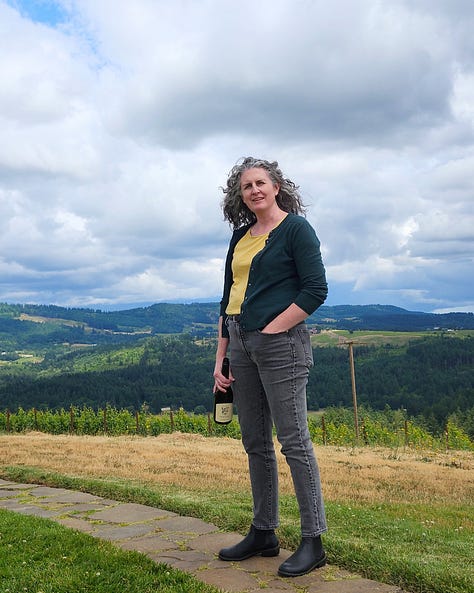
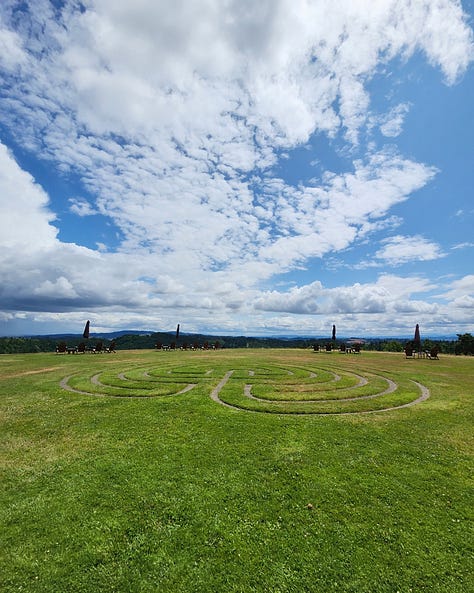
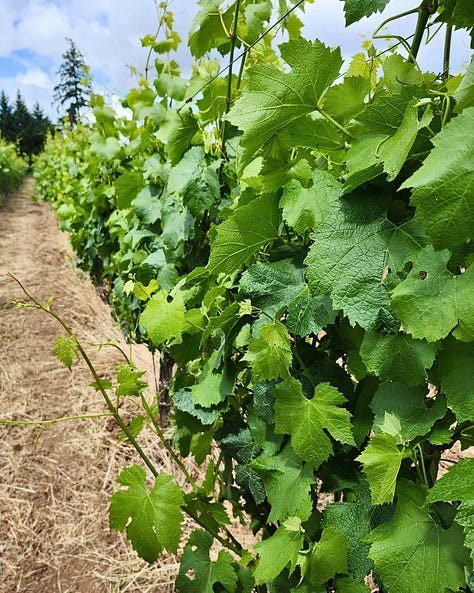
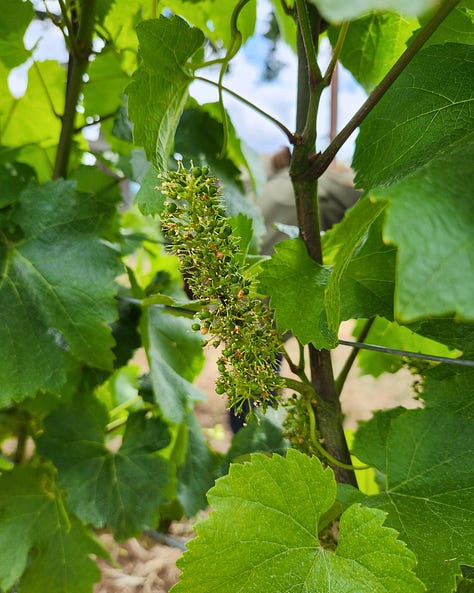
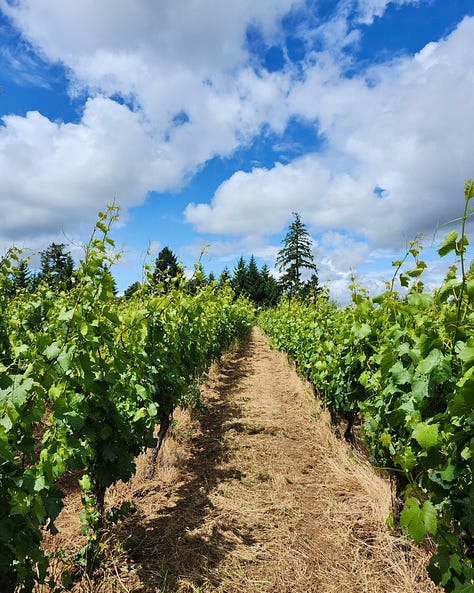
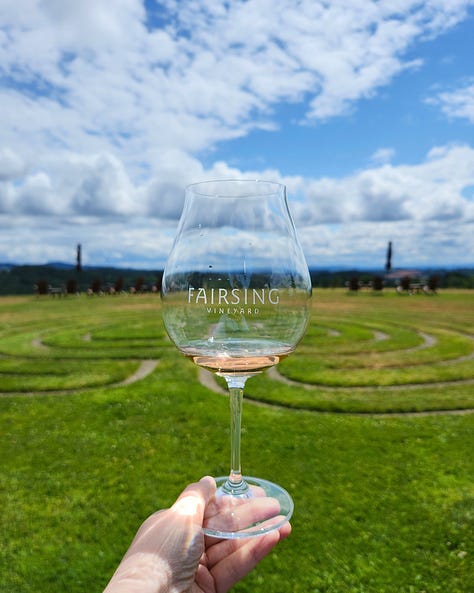
Spending time in Yamhill-Carlton reminded me that there’s no substitute for being on the ground; walking the vineyard rows, asking questions, and seeing how each place makes decisions based on their land, not just trends or labels.
The wines I tasted were shaped by farming that puts the health of the vines, the soil, and the broader ecosystem first. Whether it’s cherry trees among the vines, worms cleaning wastewater, or reforested hillsides, the work happening in this AVA is intentional, and it shows up in the glass.
Are you interested in spending time with winemakers and asking about their farming practices?
Check out the Alt Wine Remixed, happening July 12th from 6 to 9:30 pm in McMinnville. This event is a mini-version of the Alt Wine Festival in party form! The winemakers will be mingling, giving you the perfect opportunity to chat and ask questions! Purchase tickets here.
Want to follow along with my adventures as I attend many of these wine events?
Check out PDX Vine and Dine on Instagram!
Is there anything else you’d like to see in upcoming newsletters? Let me know!
If you’ve found this newsletter helpful, I’d be so grateful if you shared it with someone else who loves wine as much as you do!




